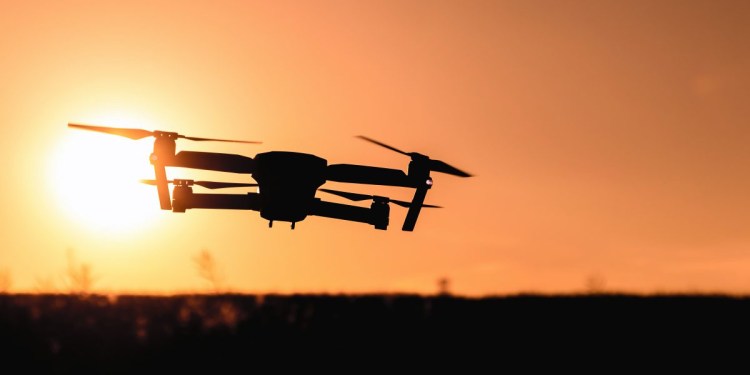As 5G networks become more widespread and robust across the world, flying drones will eventually rely on cellular infrastructure for both remote controls and live 4K/8K video streaming from the skies. But early 5G drones and networks might not yet be ready for prime time, a group of Austrian researchers suggest, as their inability to maintain consistent 5G connections limits their data transfer rates — an issue that currently impacts the ability to share live video from the field.
Drones have spent much of the last decade evolving from military tools and consumer toys into viable commercial videography and delivery devices, limited largely by a company’s budget and wireless connection range. Several companies have already announced plans to use drones for package deliveries, with Amazon piloting Prime Air, a service that will fulfill orders within 30 minutes for shoppers located within 7.5 miles of a warehouse. However, neither Bluetooth nor Wi-Fi wireless communications work at greater distances than hundreds of feet to or from the flying devices. Cellular networks would provide ideal outdoor infrastructure, but 4G’s limited bandwidth and low latency have made it less than ideal, creating a great business opportunity for 5G drones.
On a positive note, the researchers — aided by Austria’s Magenta Telekom and Germany’s Deutsche Telekom — were able to achieve peak 5G download rates above 700Mbps when testing a flying drone on a live Magenta sub-6GHz network, with averages in the 600Mbps range, a nearly 10 times improvement over 4G performance. Speeds were markedly lower during initial liftoff but still averaging nearly 400Mbps on 5G.
Unfortunately, the team found a considerable number of fluctuations in throughput, due to numerous handoffs between the 5G and legacy 4G network, as well as 5G upload speeds that were no better than 4G, precluding transmission of the ultra high definition videos that some drones are capable of recording. Handoffs become more common during flights at 100 meters than at 30 meters, at least during the initial testing.
June 5th: The AI Audit in NYC
Join us next week in NYC to engage with top executive leaders, delving into strategies for auditing AI models to ensure fairness, optimal performance, and ethical compliance across diverse organizations. Secure your attendance for this exclusive invite-only event.
The findings aren’t shocking, in the sense that the data rates are consistent with our own mid band 5G test results, which saw download speeds in the 500Mbps range but very slow upload speeds. This is due to early 5G networks’ use of “non-standalone” 5G that depends on 4G networks for infrastructure. Once networks go fully 5G, they’ll improve in consistency of download speeds, overall upload speeds, and reduced 4G-5G handoffs, assuming that the 5G tower infrastructures fully replace or build out beyond existing 4G towers.
For now, early 5G network performance could be enough for remote control of some drones, but relying on it to livestream stable ultra HD video from air to land seems unwise — at least on some 5G networks. Other 5G network carriers, such as Verizon — as well as private 5G networks for enterprise customers — are being built using millimeter wave technology capable of 1Gbps-class speeds at roughly thousand-foot distances from cell towers. That’s more than enough bandwidth for any 5G drone application, though millimeter wave buildouts are unlikely to reach national scale anytime soon, so we’re more likely to see long-distance drones use second-generation, standalone 5G networks on sub-6GHz frequencies, assuming carriers and/or businesses such as Amazon build out the network infrastructure to support them.


